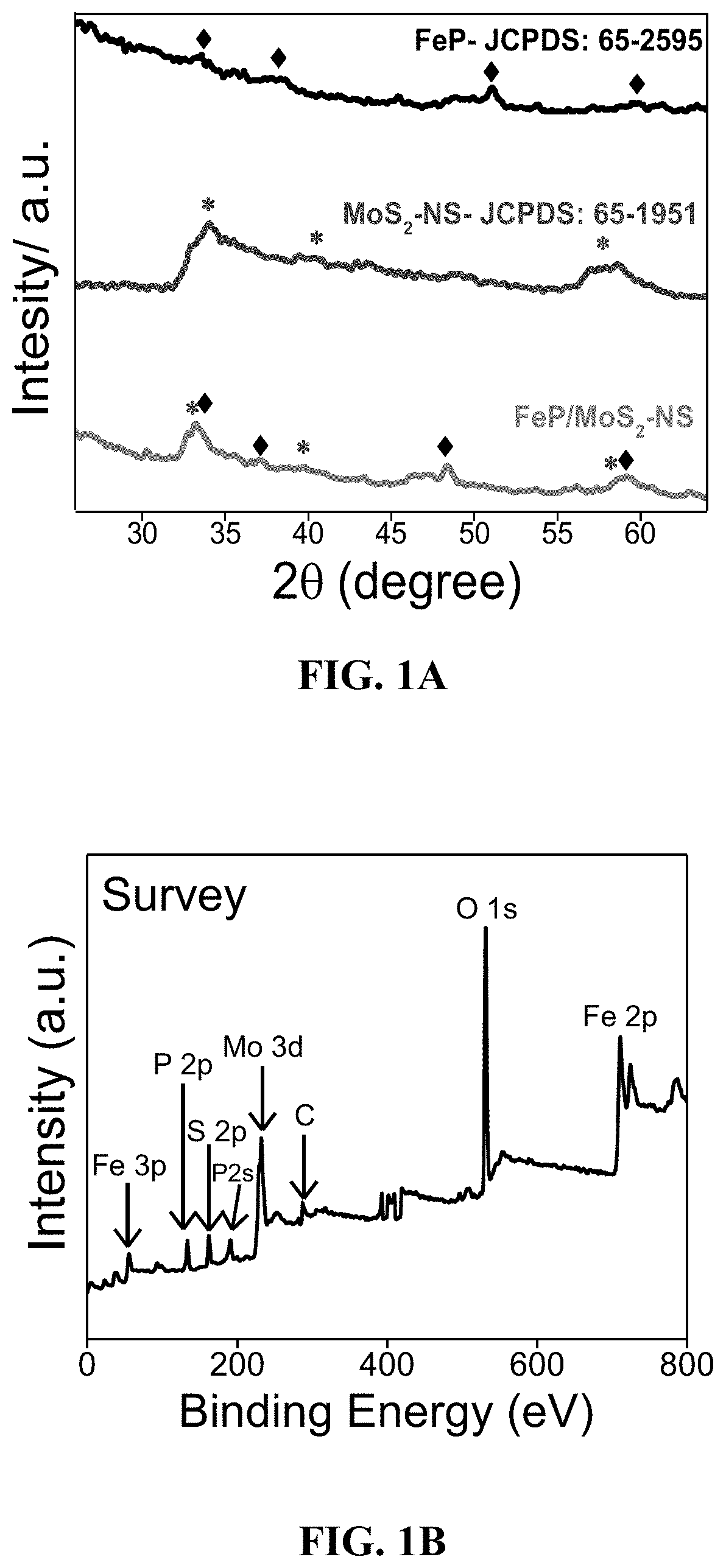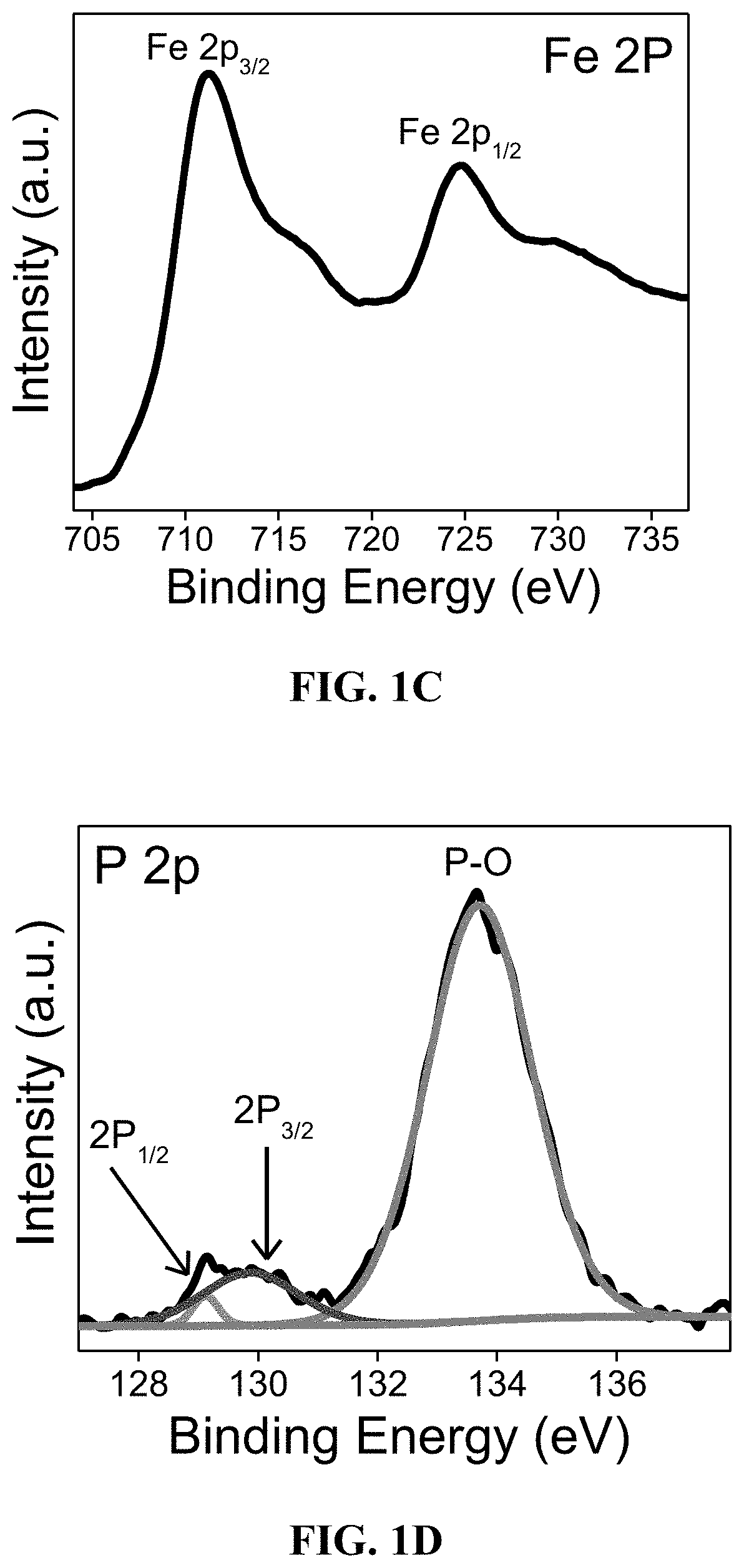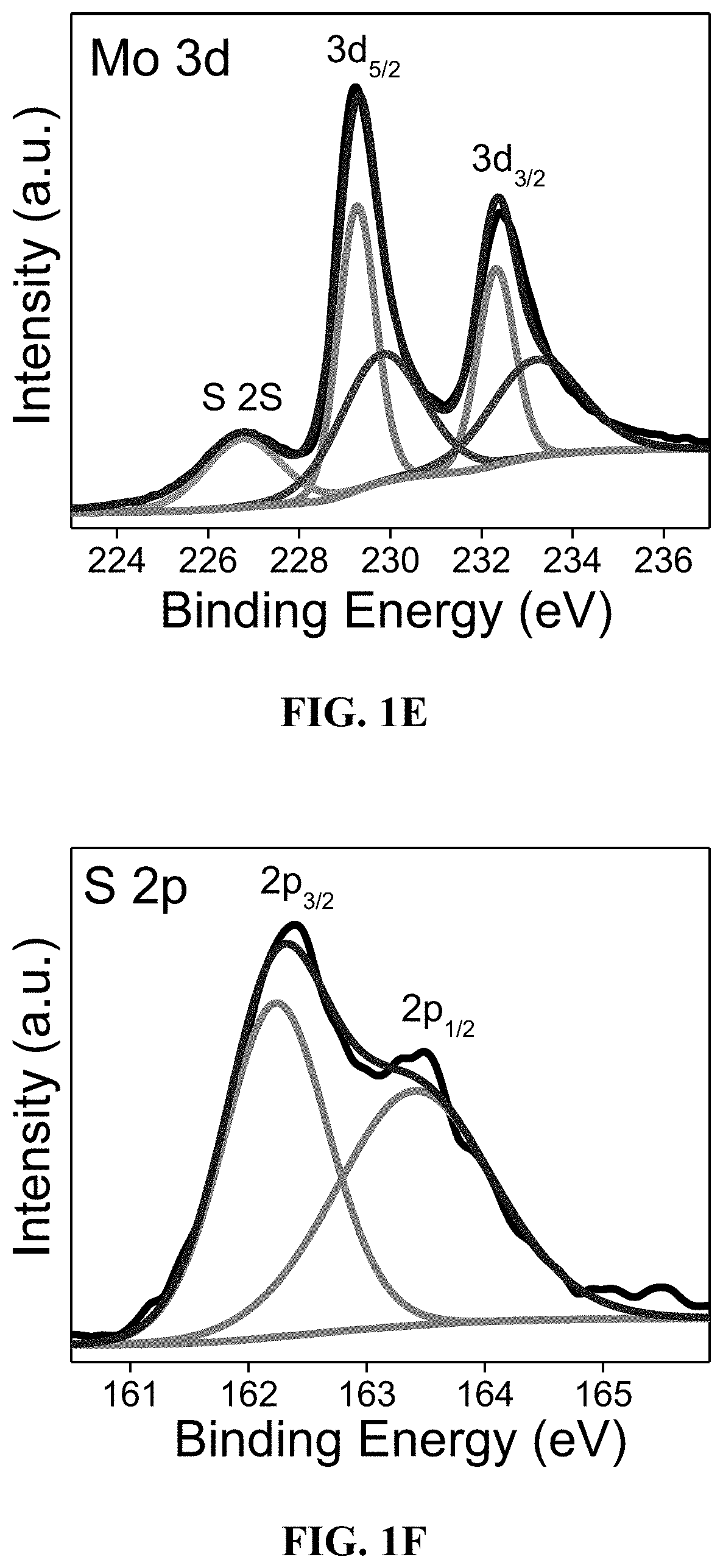Molybdenum sulfide nanosheets decorated with iron phosphide for hydrogen gas evolution
a technology of iron phosphide and molybdenum sulfide, which is applied in the field of electrocatalyst of mos2 nanosheet and fep nanoparticle, can solve the problems of high potential, high energy consumption, and complex structure of process,
- Summary
- Abstract
- Description
- Claims
- Application Information
AI Technical Summary
Benefits of technology
Problems solved by technology
Method used
Image
Examples
example 1
Experimental
[0114]1.25 g of hexaammonium heptamolybdate tetrahydrate and 2.30 g of thiourea were dissolved in deionized water under stirring. The solution was transfer into 45 mL Teflon® autoclave and reacted at 220° C. for 20 h. After the reaction time, the resulting black powder was washed with deionized water several times and then with ethanol, and dried under vacuum at 60° C.
[0115]The functionalization of the nanosheet support was done using the previously reported method, and the as prepared FeP / MoS2—NS catalytic activity toward HER was investigated. See Suliman M H, Adam A, Siddiqui M N, Yamani Z H, Qamar M. Facile synthesis of ultrathin interconnected carbon nanosheets as a robust support for small and uniformly-dispersed iron phosphide for the hydrogen evolution reaction. Carbon 144, 764-71 (2019), incorporated herein by reference in its entirety. For comparison, MoS2 nanosheets without FeP nanoparticles, and FeP nanoparticles without MoS2 nanosheets, were also prepared and...
example 2
Results
[0116]The phase of the FeP / MoS2 composite was confirmed using powder X-ray diffraction as shown in FIG. 1A. The broad peaks at 33.2°, 39.9°, 48.6°, and 59.1° correspond to the (002), (100), (103), and (105) planes of MoS2 nanosheets, respectively. The diffraction peaks located at 32.8° (011), 37.2° (111), 48.3° (211), and 56.1° (013) are attributed to FeP with a orthorhombic structure (JCPDS 65-2595). The XRD pattern of FeP and MoS2—NS are presented in the same figure
[0117]The elemental composition of FeP / MoS2—NS was investigated by XPS as shown in FIG. 1B. In the Fe 2p spectrum (FIG. 1C), the peaks centered at 711.6 and 724.8 eV account for Fe3+2p3 / 2 and Fe3+2p1 / 2 respectively, which agrees well with those peaks reported in the literature for Fe coordinated to P. See Suliman et al.; Gao et al.; and Zhou et al.
[0118]The peaks at 130.3 and 131.4 eV in the P 2p spectrum (FIG. 1D) are ascribed to 2P3 / 2 and 41 / 2 of P bonded to Fe. See Karunadasa et al. In addition, the intense an...
example 3
Specific and Electrochemical Active Surface Area (ECASA)
[0122]The specific surface area of the prepared materials was calculated using a BET surface analyzer. The resulting surface areas obtained for FeP, MoS2—NS, and FeP / MoS2—NS were 46.9, 29.6, and 15 m2g−1, respectively. The ECASA was estimated for each sample by double layer capacitance (Cdl) obtained by recording cyclic voltammograms (CVs) at different scan rates (FIGS. 4A, 4C, 4E). FIGS. 4B, 4D, and 4F show the In case of MoS2—NS and FeP / MoS2—NS, the value of specific surface area is consistent with ECASA values, which were estimated to be 60.4 and 21.3 mF·cm−2, respectively. However, FeP showed a very low Cal value equal to 1.25 μF·cm−2, which could be attributed to the agglomeration of unsupported nanoparticles. Thus, the dispersion of the FeP onto MoS2—NS increases the ECASA of the FeP particles and increases the HER activity.
PUM
| Property | Measurement | Unit |
|---|---|---|
| diameter | aaaaa | aaaaa |
| Bragg angles | aaaaa | aaaaa |
| angles | aaaaa | aaaaa |
Abstract
Description
Claims
Application Information
 Login to View More
Login to View More - R&D
- Intellectual Property
- Life Sciences
- Materials
- Tech Scout
- Unparalleled Data Quality
- Higher Quality Content
- 60% Fewer Hallucinations
Browse by: Latest US Patents, China's latest patents, Technical Efficacy Thesaurus, Application Domain, Technology Topic, Popular Technical Reports.
© 2025 PatSnap. All rights reserved.Legal|Privacy policy|Modern Slavery Act Transparency Statement|Sitemap|About US| Contact US: help@patsnap.com



